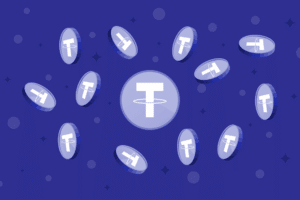
Tether USDT processed $18.2 trillion in transactions in 2022, placing it ahead of traditional payment processors such as Visa and Mastercard, according to a tweet from 14 January.
In comparison, Mastercard and Visa processed transactions worth $14.1 trillion and $7.7 trillion, respectively. Tether’s high transaction volume is testimony to the massive growth of stablecoins in recent years.
Despite the challenges facing the cryptocurrency industry, stablecoins seem to have thrived. In fact, stablecoin adoption has grown in countries where the current economic situation has put their national fiat currencies at a disadvantage.
Tether: overtaking Visa and a difficult 2022
As anticipated, Tether USDT has far outpaced traditional payments giant Visa in trading volume, as confirmed by the following tweet:
2022 Settlement Volume pic.twitter.com/k87FrknKr4
— Tether (@Tether_to) January 14, 2023
Despite this, Tether had a rather difficult 2022. Indeed, even with the growing adoption of stablecoins in 2022, over the past year Tether has seen increased concerns about its reserves and solvency following the collapse of Terra UST in May and cryptocurrency exchange FTX in November.
So, stablecoin briefly lost its peg to the US dollar at the height of Terra’s FUD crash. During this period, the stablecoin issuer honored over $10 billion in redemptions.
In addition, BeinCrypto later reported that several traditional financial institutions took short positions against USDT due to speculation about its financial health.
In fact, throughout 2022, several hedge funds have been betting against Tether. These include Fir Tree Capital Management, Viceroy Research, Valiant, and others. In particular, Fir Tree, a hedge fund with $4 billion in assets under management, took a short position against Tether.
At that time, the hedge fund even noted its willingness to create a separate fund to short Tether if there was enough interest from clients. Again, Viceroy Research also bet on the failure of Tether.
Viceroy is a short seller who had previously bet against the German company Wirecard AG before it went bankrupt. According to the founding partner, Fraser Perring, there is something wrong with Tether.
Tether victorious against Visa, but its market capitalization has declined
While USDT remains the dominant stablecoin in the cryptocurrency market, rivals such as USDC and BUSD recorded victories against it in 2022. For context, Tether’s market capitalization fell from a peak of $83.13 billion to a low of $65.31 billion during the period under review.
On the other hand, USDC’s market capitalization grew to $56 billion before declining. In fact, during this period, centralized cryptocurrency exchanges such as Coinbase urged their users to convert their USDT holdings to USDC.
More recently, Crypto.com removed USDT for its Canadian users, citing regulatory compliance measures. Glassnode data showed that USDC transfer volumes exceeded those of USDT nearly five times by the end of 2022. USDC adoption has grown because investors believe it is a safer option than USDT.
USDC assets are backed by cash or short-term US Treasury securities, and the global accounting firm Grant Thornton controls it. On the other hand, Tether has not been very forthcoming with its reserves or audits.
Issues that have led some members of the cryptocurrency community to question Tether’s 2022 trading volume figures. Some have attributed the metrics to wash trading, while others have called on the stablecoin issuer to publish its reserves.
The open clash between Tether and hedge funds
As anticipated, over the past year everyone from on-chain investigators to cryptocurrency executives have questioned Tether’s opaque finances. Regulators have also inflicted it on millions for misleading financial statements.
Meanwhile, the failure of algorithmic stablecoin Terra UST in May and the collapse of FTX in November have further piled pressure on USDT, with many now considering it the next likely failure.
However, the company has insisted that it has no problems and will continue to honor redemptions. Tether executives have described the multiple speculations about its finances as stress tests.
Speaking of hedge funds betting against it, a company spokesman said they are involved in a clever plan to raise capital from those who are less informed by leveraging misinformation with the ultimate goal of collecting a management fee.
However, the failure of the stablecoin leader would be disastrous for the entire cryptocurrency industry given its position in the market. In fact, USDT is the largest stablecoin by market capitalization and one of the most widely used assets.




















